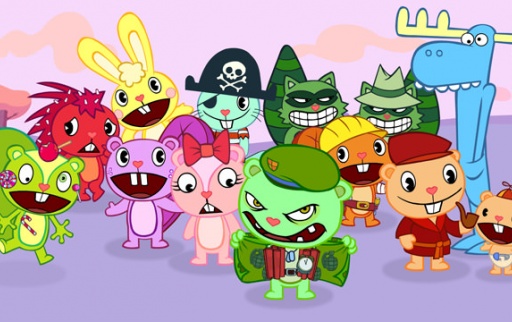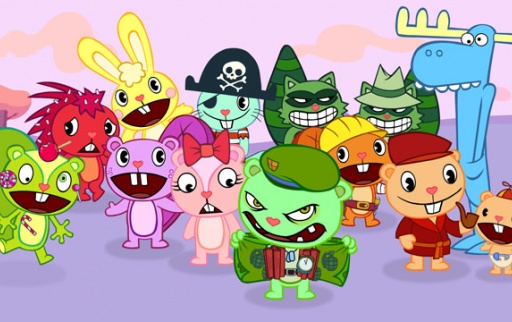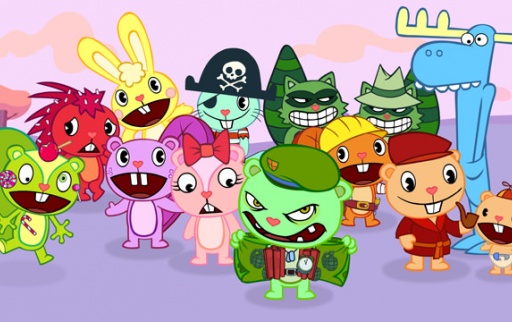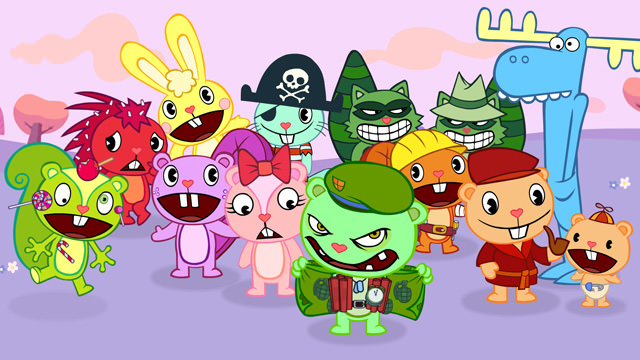

Continuing our behind-the-scenes look at the "Wrath Of Con" epsiode, when last we left our fearless adventurers we just finished talking about the merits of smoothies and thumbnails. Up next...
Step 4 - Storyboards
Now that we have the thumbnails all set we can flush it out and actually make it more understandable and continue to refine things. Unfortunately, it's more than just making the thumbnails better looking. Some of the sketches that seem ok in the thumbnails might now work once you actually draw it. So, there's some tweaking that involved with massaging those compositions to make sure they're going to work moving forward into layout/design and animation. Also, I might change my mind or get a better idea of how to re-stage something.
I'll post the same sequences from the thumbnails in the previous blog entry as they are story boarded for comparison: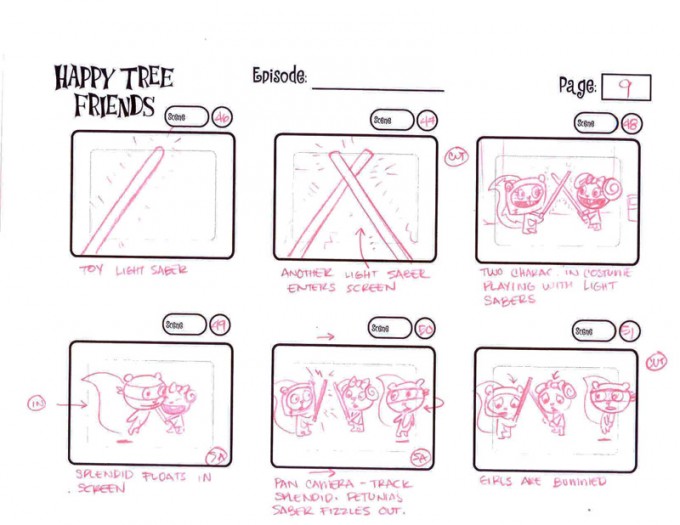
I promised there would be more pictures in this blog and here it is! I apologize again for the crappy scans. I guess the pencil I use just doesn't scan well.
This is how I will usually storyboard the episodes. Many people approach and do storyboards in many different ways and for many different purposes. Sometimes you'll see highly rendered boards, with amazing drawings and even shading and colors. Most of the time those are "presentation" boards and are mostly for show. The ones we do for the show are more like "production" boards, fast, quick and loose drawings to give the needed information to the artists. Some boards even go further and have very detailed movements, down to boarding each key-frame for animation. These are called "animation" storyboards and might even be looser and more sketchy. The ones I do for the HTF are somewhat of a hybrid between "production" and "animation" boards. Again, it's just enough to show everyone working on the show what's going on and what to do.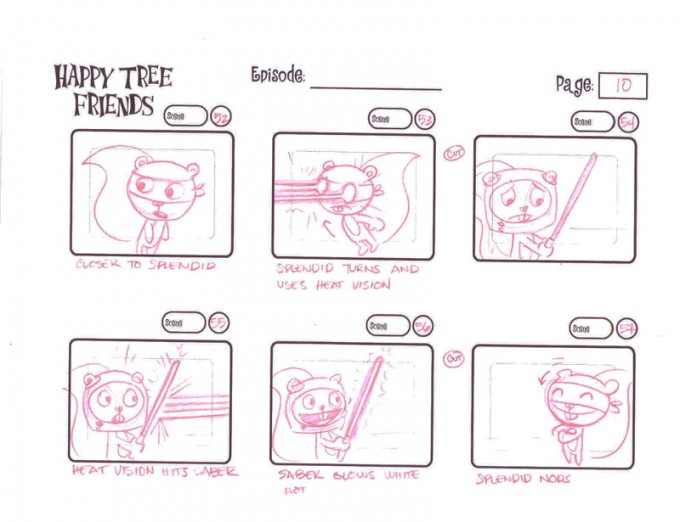
I'll also write notes at the bottom of each panel to clarify some of the action. We want to make sure everything is clear and explained as much as possible. These things become a big issue when we're sending work outside of the company to minimize the time it takes to go through each episode. I think everyone would rather be doing the actual work than talking about it so the smoother we can make that process the better.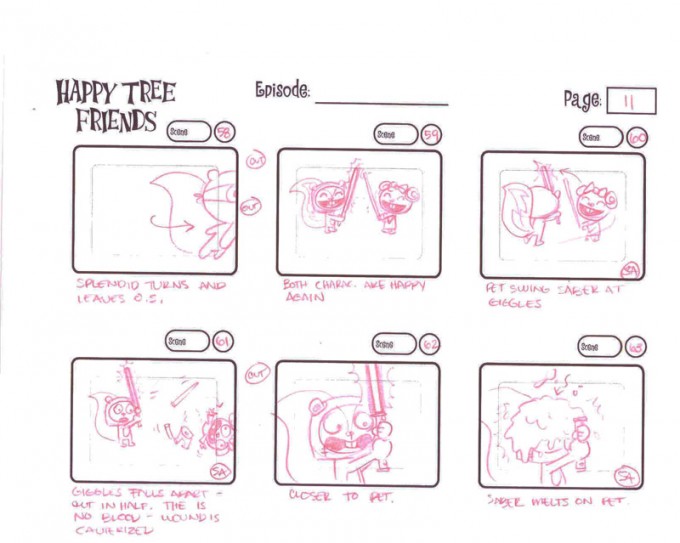
Often times too the dialogue and major sound effects might get called out in the storyboards. You won't see them in the scans I have up here because I generally like doing that on photocopies that the production team will get. This includes the sound guys (Jim and Jerome) as well as any voice over performer. We try as much as possible to work with storyboards with the voice over folks as I find it helps them visualize the scenes better. We've certainly done record sessions with scripts, which do work well but I prefer being able to show them something rather than have then read text. Maybe, that's just the visual thinker in me.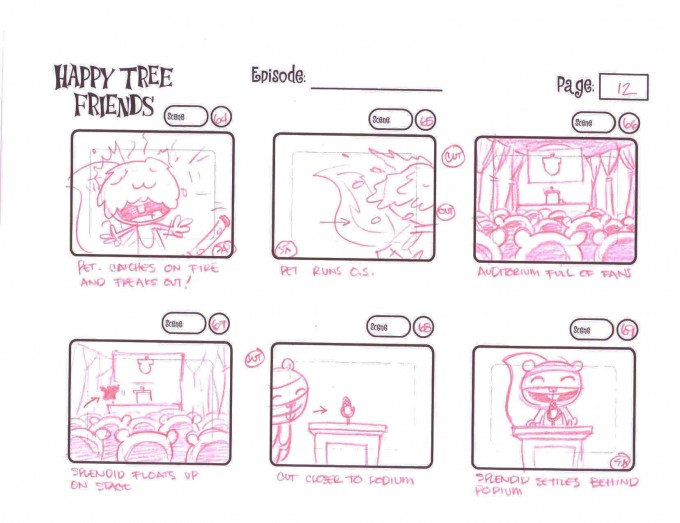

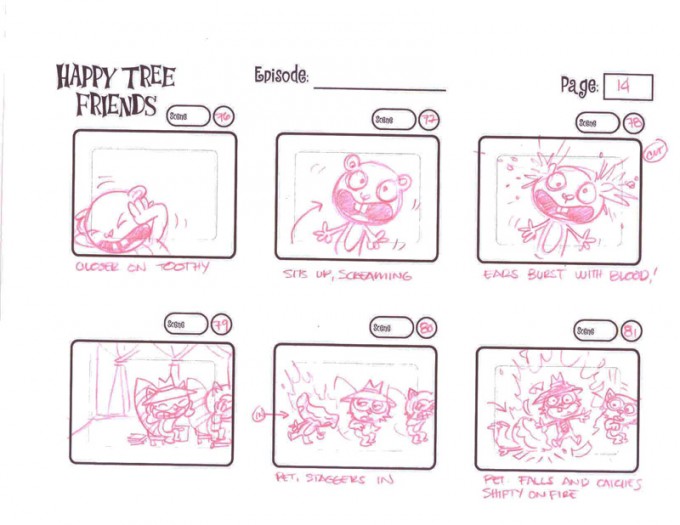
You'll notice that some things have changed from the thumbnails but most everything else is the same. Some decisions are made based on the clarity of a scene. As an example, I originally had Giggles (who was originally Petunia) run in the auditorium where Splendid was giving his talk then smash right into the wall. This in turn caught the curtains on fire then caught the characters on fire. Re-examining that sequence, it just felt like there was too much process going on and there was room to trim... cut the "middle-man" out, if you will. So, in the boards, I re-staged it so that she now runs in and falls on Shifty and setting him on fire directly rather than the extra process with the curtains.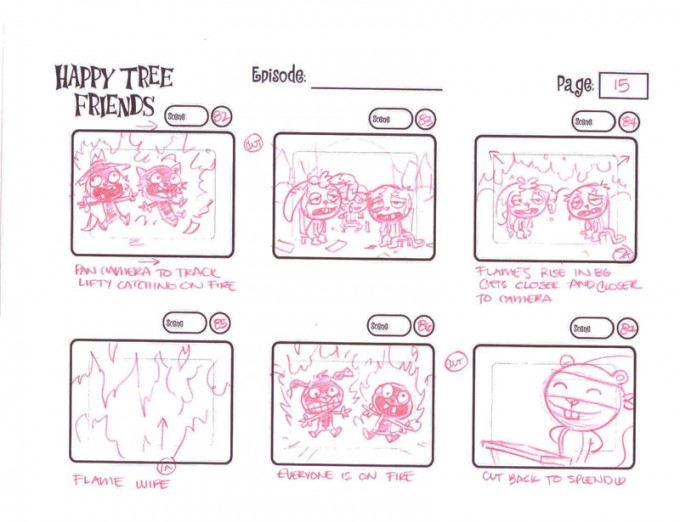
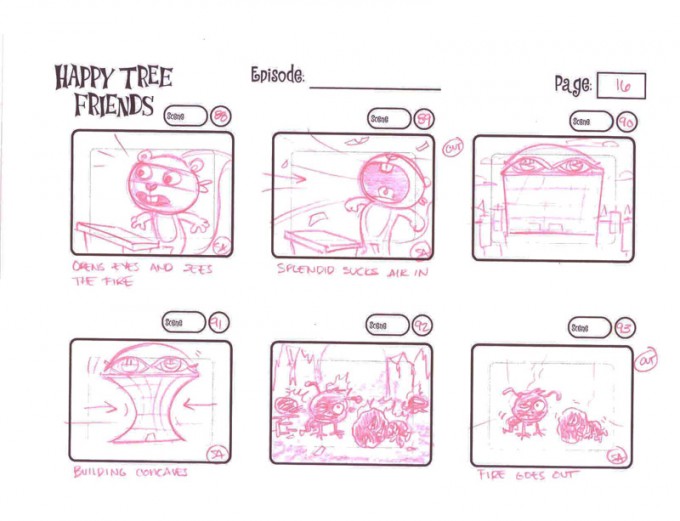
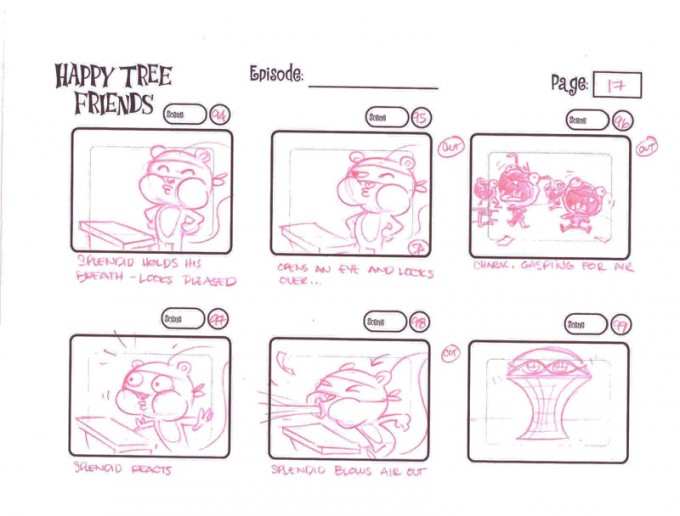
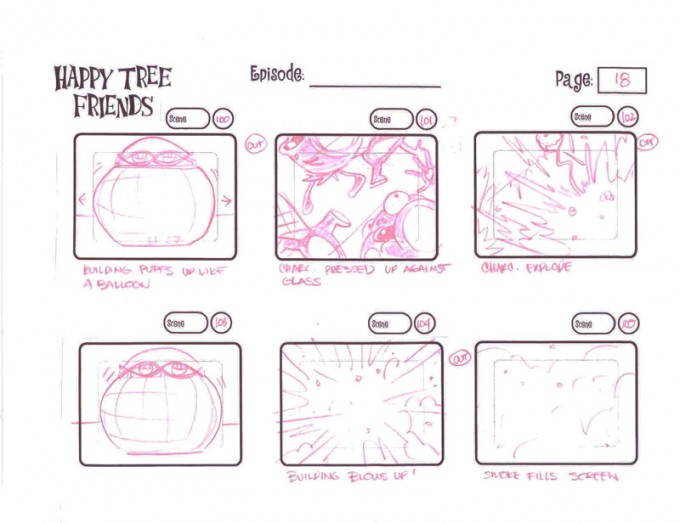
Other times, it just comes down to preference and personal taste. I honestly can't tell you why I chose to switch Giggles and Petunia's positions... it just felt like the right thing to do. So, tweaks of this nature runs the gamut throughout this stage. Big major changes are usually taken care off at this point. Changes can be made easily with an eraser, scissors, some glue and a few quick strokes of a pencil but become harder to do once we're in full production (layout and animation). These pre-production steps help us minimize those adjustments (even thought they will still happen on occasion) and make sure we're getting the most impact for our time. Especially since the next steps are going to be the most expensive and time consuming part of the whole cycle.
Step 5 - Layout/Design and Voice Over Record
I'm putting these two processes together in one step because it usually happens con-currently. For the layout process, we take the boards and create the backgrounds, props, colors and pose the characters as best we can to get it ready for animation. The boards serve as a blue-print to what we're doing. At this point, most of the composition and scenes are fairly locked down so we translate that into Adobe Flash, the main production tool we use to do art and animation for the show.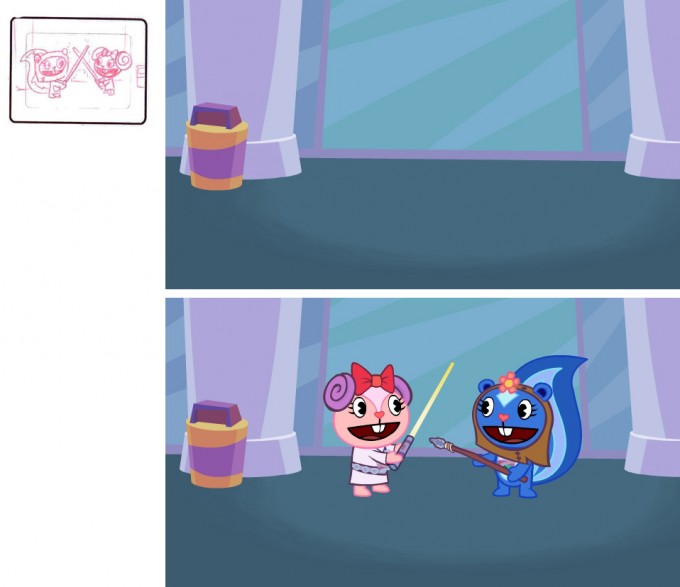
Here's an example of one scene in the layout process. In the upper left we see the original storyboard (sorry, the background in it is a little unclear and didn't scan so well). The background artist will start with the board and create the background in Flash (top right). We may change things slightly to make the composition better. In this case you see that I'm still using storyboards with 3:4 aspect ratio as opposed to 16:9 (mental note to change that... and get a mental recorder). Then we add the characters in with whatever props or clothing that they need to be wearing based on the the storyboards need to be drawn up as well (bottom right). Depending on how much time we have in the layout stage, we might even pose some of the characters to get it ready for animation.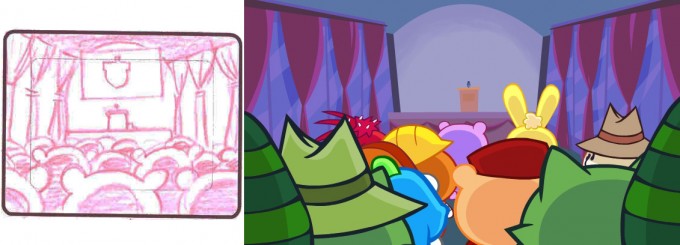
Many times, I'll just draw generic characters in crowd scenes to block them out and we'll fill in the who's-who when we do the layout.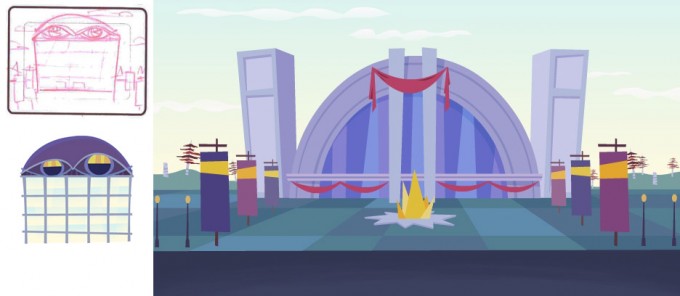
Old school nerds will recognize the "Hall Of Justice" homage (right) that we used as the convention center in the show. Originally, I wanted to use the "Legion Of Doom" headquarters (left) but I wasn't happy with the final design and decided to change it during the layout phase.
Production is a staggered process to be as efficient as possible. Once the first few layouts are done they're shipped off to animation. As the layouts roll off the assembly line they're fed directly into the maws of the hungry animators... their appetite is never satisfied! We'll dive into animation more in the next phase.
While all that is going on, we go visit Jim in his studio to record some audio for the episode!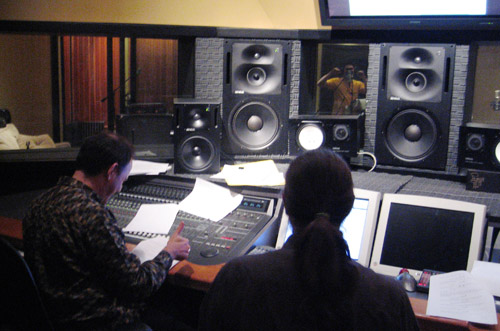
Confession time, these pictures are actually from when we were producing the TV episodes but it should give you a good idea of what goes on. These particular ones are from a session we recorded at Studio Paradiso, right here in the heart of San Francisco! That's Producer extraordinaire, David Ichioka on the left giving me a thumbs up (I think that's me in the yellow shirt pumping my fists in the sound booth in the background) and the one and only, Jim Lively (with the pony tail) on the right.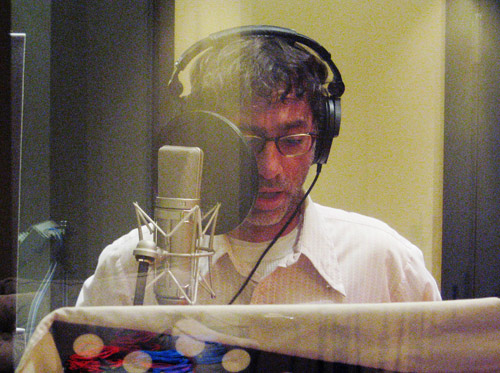
The multi-talented Peter Herrmann (above) on microphone doing Disco Bear! Oh, yeah!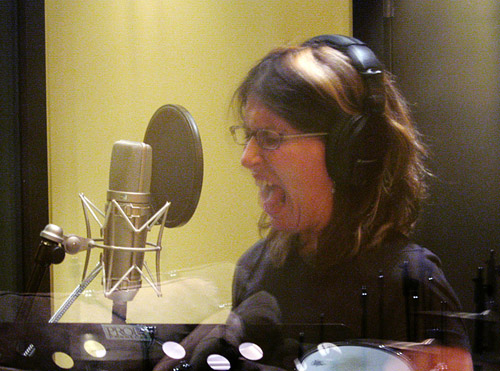
The lovely Nica Lorber (above) is fan fave, Flaky!
Again, we use either the script or better, the storyboards to determine who we need to call in and what they need to say. The sessions last an average of one to two hours, depending on how many people we need to record and how many lines of "dialogue" we have. Back during the production for the TV episodes, we would have sessions that go on for four to five hours, which are pretty brutal. Thank goodness we all have a good time screaming and yelling in the sound booth so, it makes the time pass faster.
Speaking of time, where does it go? Let's wrap it up for now and we'll conclude in part III: Son Of Con! See you guys then!



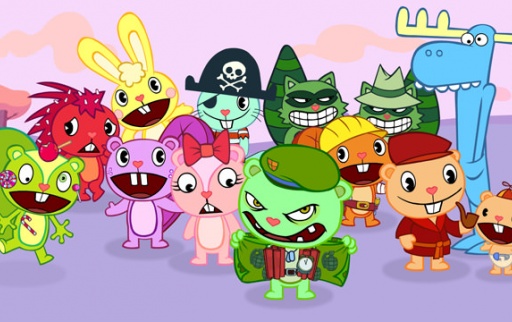
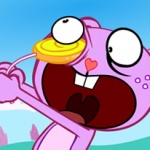 Happy Tree Friends
Happy Tree Friends 